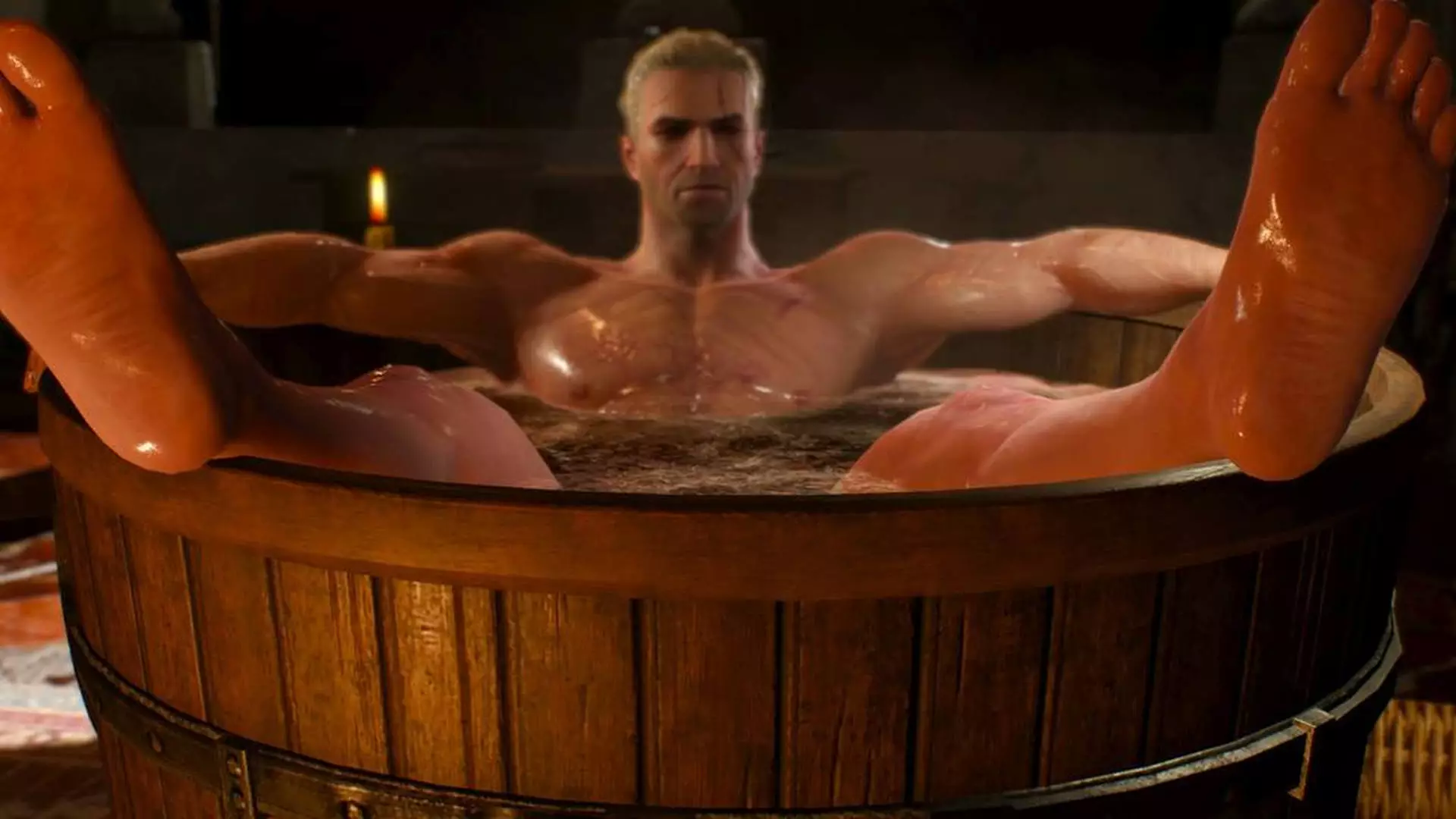CD Projekt Red, the developers behind the critically acclaimed game The Witcher 3, recently shared an intriguing idea that never made it into the final version: a mechanic that would require the protagonist, Geralt of Rivia, to strip off his armor before swimming. While the concept may seem inventive on the surface, it’s essential to dissect this notion to grasp its implications on gameplay and player experience.
As CD Projekt continues to celebrate the tenth anniversary of The Witcher 3, the revelation raises an important question about how much realism in video games can enhance or detract from enjoyment. By proposing that Geralt could drown if submerged in water while fully armored, the developers seemed to toe the line between immersive gameplay and frustrating realism. This mechanic could have created a more authentic sense of danger, mirroring historical anecdotes of armored knights meeting fate in water. However, this authenticity also risks alienating players who seek enjoyment over simulation.
The Thin Line of Realism in Gaming
Video games serve a dual purpose: they aim to provide an engaging escapism while often drawing from reality to build their worlds. With the suggestion of this drowning mechanic, we encounter a classic dilemma faced by game designers: how much realism is too much? While some may laud this idea as a creative attempt to enhance immersion, the practicalities quickly start to unravel the concept.
Consider exploration mechanics present in many popular open-world games. Navigating diverse terrains is crucial for moving the narrative forward, and introducing cumbersome limitations like stripping gear can frustrate players. Imagine embarking on a quest where you must disrobe each time Geralt approaches a body of water. The excitement of uncovering a hidden treasure or completing a challenging mission would be dampened by unnecessary interruptions—the very antithesis of engaging gameplay.
The Legacy of Historical Realism
Ironically, real-life accounts of armor-clad figures meeting tragic ends in water—like the legendary tale of Frederick Barbarossa—may evoke a morbid curiosity, yet they don’t translate well into gaming. Players often cherish the escapism video games provide, preferring to bask in the fantastical rather than be reminded of the harshness of reality.
In many successful titles, developers have skillfully balanced realism with fun. Games like The Legend of Zelda: Breath of the Wild and Skyrim allow freedom of movement without excessively punishing players for logical actions—like entering water. When comparing these titles to the discarded drowning mechanic of Geralt, it becomes evident that gameplay should prioritize enjoyment and fluidity.
Though the concept of Geralt needing to disrobe before swimming serves as an interesting thought experiment, it also highlights the crucial balance developers must strike. As more games venture into realism to enhance immersion, they must not lose sight of the core of gaming: entertainment. CD Projekt Red’s choice to abandon this feature likely reflects an understanding that the essence of a successful video game isn’t merely rooted in authenticity—it’s about creating a world where players can immerse themselves fully, unburdened by the constraints of the real world.


Leave a Reply